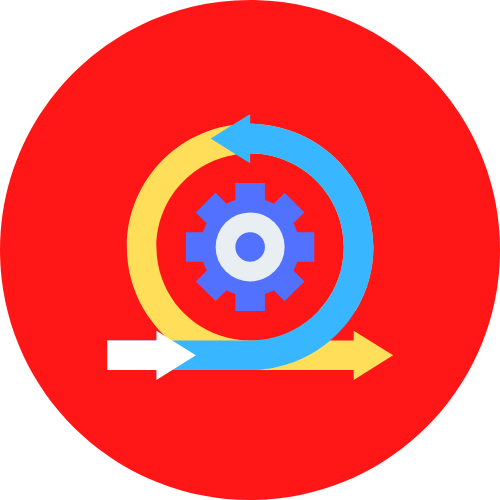Among the different methods of project managementAmong the different project management methods, the so-called “agile” method is distinguished by its orientation towards the customer rather than the product. It is a completely collaborative management. It involves not only the actors of the project teams, but also the client himself, who intervenes regularly as the project evolves. The client’s role is decisive, as he participates in the achievement of his objective. As such, one of the principles of agile project management is to break down the work into actions. In the form of milestones, these actions constitute sub-goals. This process makes the project more flexible, because it is adaptive. It therefore leads to better cost control, by deploying a short-term vision thanks to the sub-objectives.
What is the agile method in project management?
In 2001, 17 software developers gathered their knowledge of project management and created the Agile manifesto. This manifesto frames the aspects of the agile methodology, which can be presented as follows:
- Putting the customer at the heart of the process;
- break down the work into sub-objectives;
- work in teams;
- agree to be flexible.
The agile method is generally contrasted with traditional project management, which consists of working in a cascade, according to what is called the V-cycle. In this traditional method, the project is framed upstream, in a rather rigid way. This has the advantage of knowing the exact costs and establishing a budget, but sometimes prevents any improvement of the deliverable.
With the agile method, the customer indicates what he needs, then the teams move forward in stages, according to the customer’s validation. This creates a flexibility that allows the project to be adjusted as it evolves, just as the client’s request may change along the way.
This responsiveness is an undeniable advantage over the competition. It should also be noted that the agile method is better suited to organizations with a flexible operation rather than to large structures with a more structured and formal operation. The agile method works by iterations, loops that go back and forth between the project teams and the client.


The advantages of the agile method
The agile method is appreciated by both the operational teams and the customers themselves. The fact that it is focused on communication has a lot to do with it. The customer sees that his opinion is taken into account and that his requirements are being met. He knows that he is free to change his mind, the project remains flexible. Communication is transparent, with constructive exchanges between the client and the teams.
This approach builds an excellent corporate image, while strengthening trust. It builds customer loyalty, especially if the deliverable was a success! Teams will feel empowered because they will not be driven in a hierarchical way, but also transversally, through peer-to-peer guidance and support. They will communicate directly with the customer, will be able to express feasibility, ideas and improvements directly.
A very important point: the skills of the staff will be recognized, both by the client and by their management.
Finally, there is cost control. The budget is also adjustable. The control is systematic and permanent. Depending on the decisions that are made as you go along, you know what has already been spent and what still requires investment.
A tool to improve
project management ?
The disadvantages of the agile method
The disadvantages are few. But by adopting the agile method, you will, for example, have to communicate a lot with the customer. The collaborative mode requires a good understanding between all stakeholders, client teams, or teams between them. The human being remains the central pivot of this method, a healthy cooperation is to be monitored at all times.
The client’s availability and participation are essential. He or she will need to find the time to give you the attention you need to think about the next step together. The processes are not formalized as with the traditional method. There is not much documentation, so the contacts should remain the same as much as possible.
Finally, the agile method does not offer the same visibility as a so-called traditional method. This lack of visibility can affect costs. Something unexpected can always happen. While agile flexibility is an advantage in this case, the added cost of this contingency can be a problem.


Agile methodologies for project management
As we have seen above, there is not only one project management methodology. Even with agile, there are several ways to do this. These include Scrum, Kanban and Lean Development methodologies. If the processes are different, the common point remains the division into milestones or iterations.
To help you define these milestones, you can use a Gantt chart. This is a schedule that you can keep on computer or on paper, made up of rows and columns. The best thing to do is to work on a computer, it will be easier to make successive modifications. To this end, a management software can replace this system and improve it. It will provide you with efficient resource management. This type of software can be adapted to all projects, regardless of their field of activity, complexity, size or scope. They ensure performance in order to keep your commitments to your customers.
